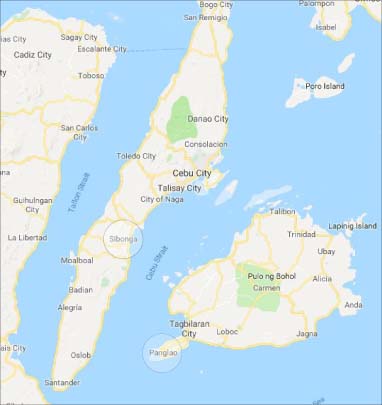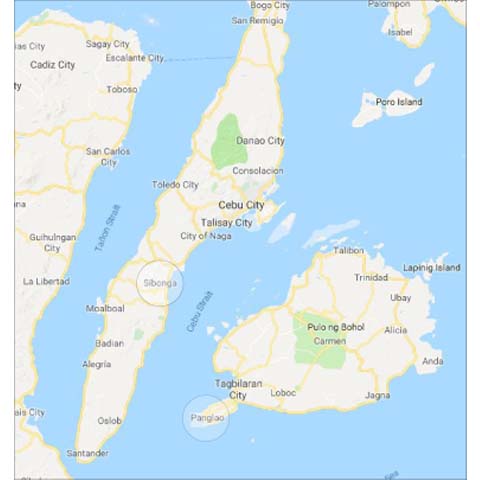 During our research on old names of places in the Philippines mentioned in ancient Chinese records, we encountered a pair of names – 沙瑶 (Sayao) and 呐嗶嘽 (Dapitan). 呐嗶嘽 is easy to locate because Dapitan is pronounced almost exactly like Na-pi-tan in Hokkien or Na Bi Dan in Mandarin. This Zamboanga del Norte city is famous for having been the place of exile of national hero Jose P. Rizal. 沙瑶 (Sayao), however, is hard to find.
During our research on old names of places in the Philippines mentioned in ancient Chinese records, we encountered a pair of names – 沙瑶 (Sayao) and 呐嗶嘽 (Dapitan). 呐嗶嘽 is easy to locate because Dapitan is pronounced almost exactly like Na-pi-tan in Hokkien or Na Bi Dan in Mandarin. This Zamboanga del Norte city is famous for having been the place of exile of national hero Jose P. Rizal. 沙瑶 (Sayao), however, is hard to find.
Since the Ming Annals recorded 沙瑶 and 呐嗶嘽 as being connected or adjacent, we searched all the places near or around Dapitan but in vain. So, 沙瑶 had remained on our mind since we started this research almost 20 years ago.
By accident, while researching on Bohol’s history, we came to know from a Wikipedia entry that the Dapitan in Zamboanga del Norte was not the first and original Dapitan. The first Dapitan was in Bohol.
According to Wikipedia article, “Bohol in History:”
Bohol’s first indigenous people settled in the Anda peninsula. These people came from Mindanao…. Around (the) 12th century, a group of people from northern Mindanao settled in the strait between mainland Bohol and the island of Panglao. These people came from a nation in northern Mindanao called Lutao (probably the animist kingdom of what will soon be the Islamic Lanao). Those people established the Kedatuan (kingdom) of Dapitan in western Bohol because the true indigenous people of Bohol in Anda peninsula and nearby areas were not open to them, forcing them to establish settlement in the west part of the island. They occupied both shores and the entire island of Panglao. The Kedatuan was first built with hardwood on the soft seabed. It engaged in trade with nearby areas and some Chinese merchants.
[Jesuit missionary Fr. Ignacio] Alcina talks about a rich nation he called the “Venice of the Visayas,” pointing to the Kedatuan of Dapitan at the time…
By 1563, before the full Spanish colonization agenda came to Bohol, the Kedatuan of Dapitan was at war with the Sultanate of Ternate in the Moluccao (who were also raiding the Rajahnate of Butuan). At the time, Dapitan was ruled by two brothers named Dailisan and Pagbuaya. The Ternateans at the time were allied to the Portuguese. Dapitan was destroyed and Datu Dailisan was killed in battle. His brother, Datu Pagbuaya, together with his people fled back to Mindanao and established a new Dapitan in the northern coast of the Zamboanga peninsula.
With this new lead, we searched this time areas adjacent to Panglao to see if we could find 沙瑶. Eventually, we were able to find a barangay named exactly Sayao in the municipality of Sibonga, Cebu, just across Cebu Strait opposite Bohol.
Sibonga is a third-class municipality of Cebu province with a population of 48,168 as of 2015. Barangay Sayao is small, with only a population of 1,772. But who knows? During ancient times, Sibonga might have been known as Sayao, at least among the Chinese who had gone there and to Dapitan to trade. According to the Ming Annals (vol. 333), Chinese traders had brought porcelain, pots, cauldrons and cloth to trade with the locals. The Ming Annals also mentioned about the custom, religion and practices among inhabitants of Sayao and Dapitan.
